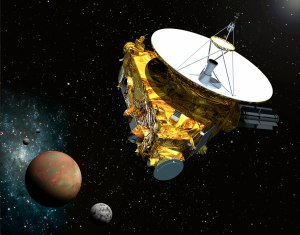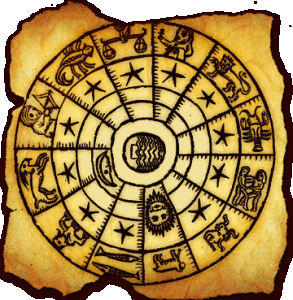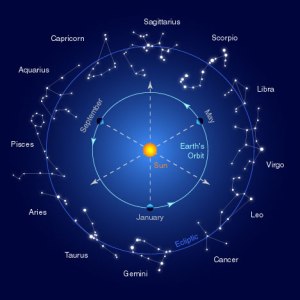Johannes Kepler (1571-1630)
Johannes Kepler’s work began when he apprenticed for Tycho Brahe in the year preceding Tycho’s death. Kepler was determined to find an orbit for Mars and to match this orbit to a perfect circle, as was thought of all celestial orbits during the time of Tycho’s observations. While other astronomers had been content with mapping the orbits of planets on two models, east-west and north-south, Kepler sought to craft a model that unified these two constituents of a planet’s orbit. This led him to his most important discovery, that planets orbit the Sun in elliptical shapes rather than perfect circular orbits. He summarized this discovery and the mathematical conclusions related to it in Kepler’s Laws of Planetary Motion, which are still widely accepted today. More importantly, Kepler set a precedent of investigating new ideas on the basis of concrete data rather than socially accepted beliefs. This was the first conclusion to break down the idea of celestial perfection. (Read more at Encyclopedia Britannica)
Several important changes were happening in Europe during the time that Johannes Kepler lived in Germany. Two of these were the Thirty Years’ War (1618-1648) and the defeat of the Spanish Armada (1588).
Thirty Years’ War (History Channel)
The Thirty Years’ War, which lasted from 1618 to 1648, marked one of the most important religious and political conflicts in Europe after the Renaissance. After a Spanish king sought to secularize areas under his influence, Protestants of the country rebelled, sparking a war among many of the most powerful countries in Europe at the time, including Spain, France, Sweden, Austria, and Germany. Most of the war was fought over thirty years on German territory, where Johannes Kepler resided for most of the war. Germany was split into two fierce groups, the Protestant half supported by England, the Dutch Republic, and Denmark, while much of Spain, Austria, and the rest of the Holy Roman Empire (those supporting the Pope) supported the Catholics. This war is known for some of the bloodiest battles and ruthless conditions in European history: nearly a quarter of the German population was killed during the Thirty Years’ War; however, this conflict also represented the end of physical religious conflict in Europe.
Defeat of the Spanish Armada (Elizabeth I Informational Site)
Until the end of the sixteenth century, Spain was the most powerful state in Europe, boasting a powerful navy fleet and ruthless monarchy. In the 1580s, King Phillip II prepared a fleet of Spanish ships – an armada – to invade England so that he could end the reign of Queen Elizabeth I, claim the throne, and ensure that England remained Roman Catholic (this was the same basic conflict that occurred during the Thirty Years’ War, but on a larger scale – that war encompassed all of Europe while this battle involved only Spain and Britain). In 1588, Phillip II planned an attack – from Spain through the English Channel and from the north using ships stationed in the Spanish Netherlands to overtake Britain. However, the English monarchy heard of the attack and was prepared, defeating the Spanish off the coast of Great Britain.
Another key historical figure who lived during the time of Kepler was Protestant hero Gustavus Adolphus (New World Encyclopedia).
Gustavus Adolphus was born in 1594 in Stockholm, Sweden and died in 1632 in Saxony, Germany. During his rule, he expanded Sweden’s economy, grew its role in European politics, built a fully functioning military, and introduced Sweden as one of the major European states, a legacy that continues today. Adolphus was known for being a brilliant military general, as shown in his successful battles led in Germany against the Catholic Spanish.
According to The Cosmic Perspective, Kepler was “deeply religious” (65) and thought that the study of astronomy and patterns in the heavens would help him better to relate with God and his religious study. When I first read this in the textbook, I thought it seemed a bit arbitrary – Kepler’s mathematical discoveries were more important than his motivation for studying astronomy. However, looking deeper into the historical context, the true time in which Kepler lived, it was easier to see that any type of scientific research could not have been separated from the religious atmosphere in Europe at this time. Politics, economics, and science were all governed by the religious affiliations of countries. Especially in Germany, Kepler would have been forced to think about the difference between Catholicism and Protestantism and to take part in the one of the bloodiest European wars as a civilian whose life could have been threatened by the fighting in his own country. Everything at this time was connected to religion. This also puts in perspective the difference between astronomy today and astronomy in the sixteenth and seventeenth centuries. Today, it would seem bizarre to study mathematical relationships and the laws of physics in order to be more in tune with religion; we have completely separated science and religion. However, in Kepler’s time science and religion were still very much connected, as many natural phenomena were explained in supernatural terms.












You must be logged in to post a comment.